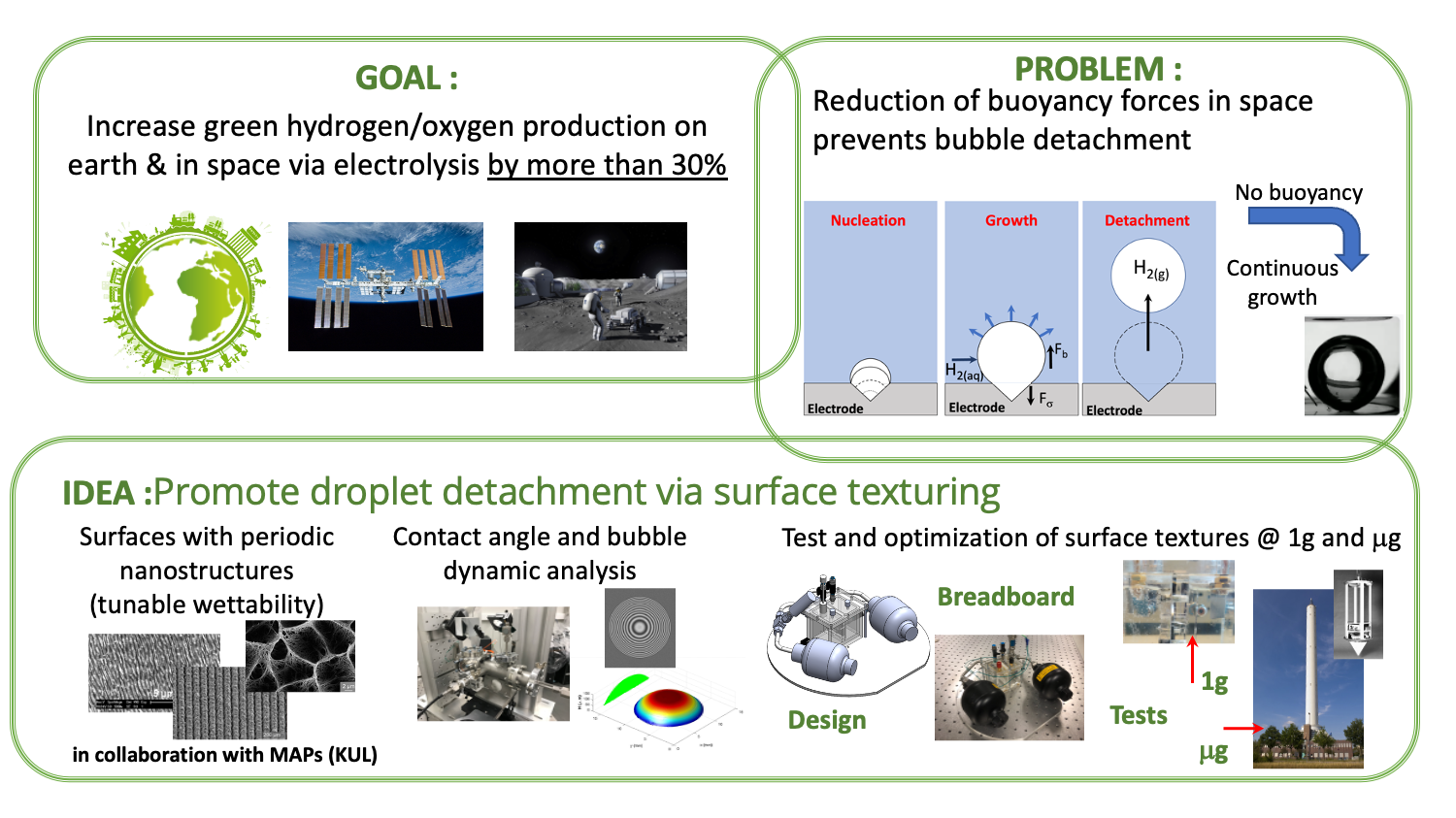Finding sustainable energy sources is a priority for preserving life on Earth and in space. On Earth, the increase in the production of green hydrogen is a significant part of the national and regional policy plan toward net-zero emissions by 2050. In space, the availability of hydrogen and oxygen is crucial as human space exploration relies on an efficient and stable supply of these gasses, essential for sustaining human life and replacing pollutant rocket propellers (hydrazine). Water electrolysis has proven its effectiveness for producing oxygen and hydrogen on Earth, where buoyancy leads to releasing gas bubbles produced on electrodes. Still, in space, these forces are barely absent. Alternative strategies have been investigated to induce gravitational forces, hence bubble detachment from the electrodes, but they all cause additional energy costs. Our IDEA is to enhance detaching of the gas bubbles via surface texturing. In this project, we texture the electrodes using fs-laser and ns-laser with or without the additional use of monolayer coatings to produce durable surfaces with tailored wettability that increase the nucleation site density, reduce bubble coalescence and promote bubble detachment. The electrodes are textured with LIPSS structures and multi-scale microcavities that have proven a substantial enhancement (more than 30%) in nucleation density and bubble detachment frequency during other nucleation-driven phase change phenomena (pool boiling). In the project's first phase, we evaluate on Earth the increase in efficiency of hydrogen and oxygen production and the durability of the electrodes thanks to experimental set-ups already available at KU Leuven. We measure surface wettability, visualize, and quantify the bubble production rate and coalescence. We adapt and test our experimental facility for 0g experiments (drop-tower) in the second phase of the project. Support will be asked to ESA (CORA) and BELSPO for the microgravity activities.

